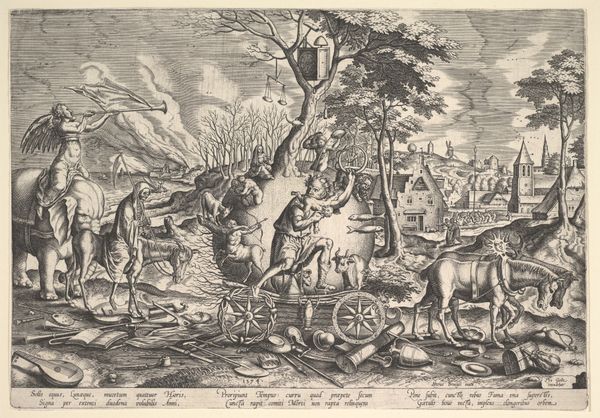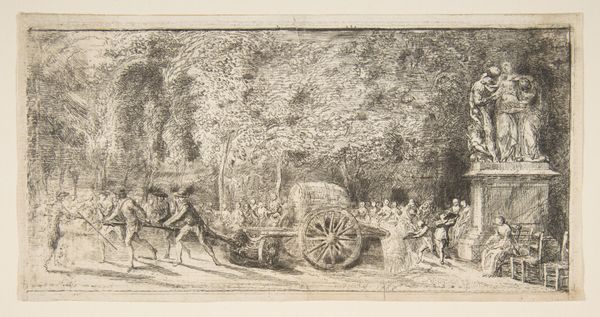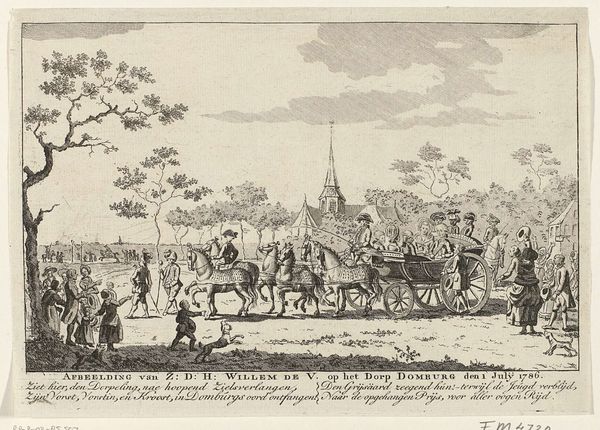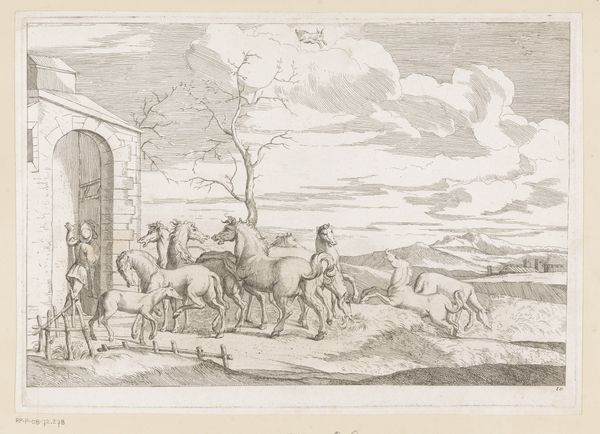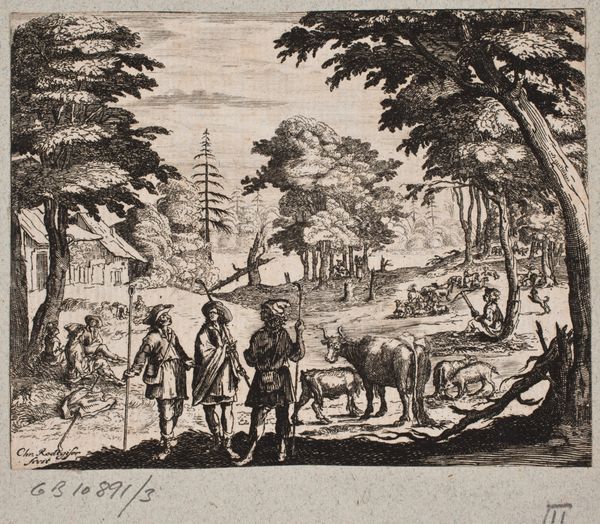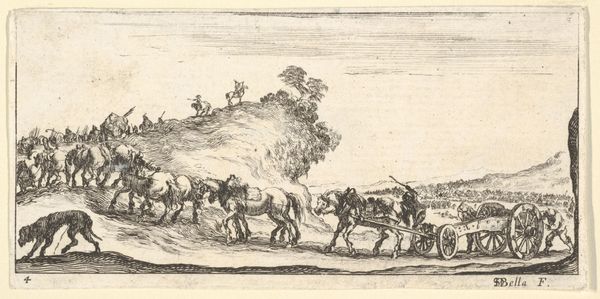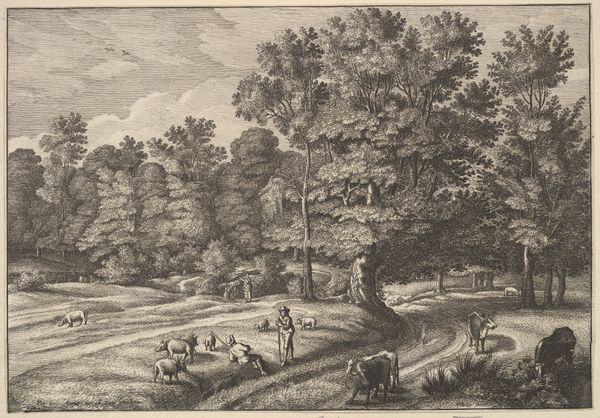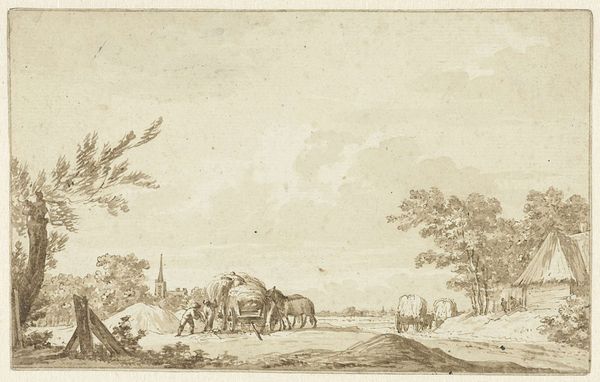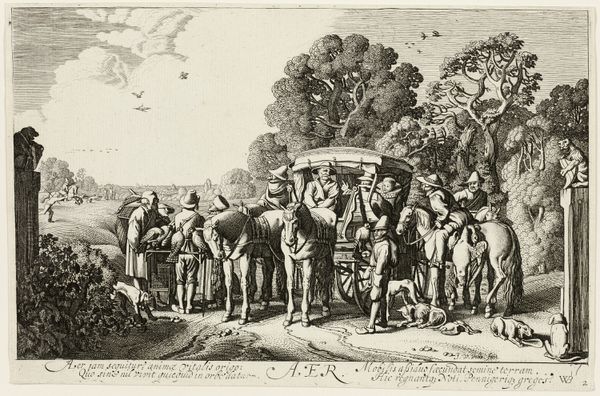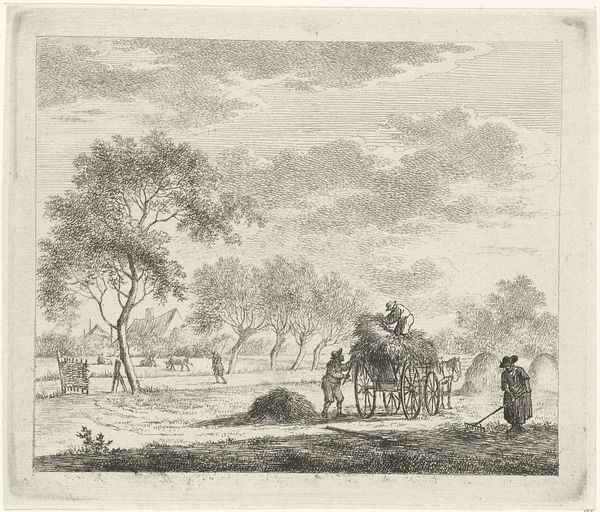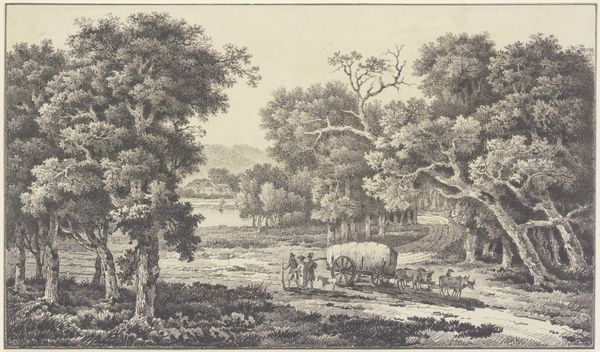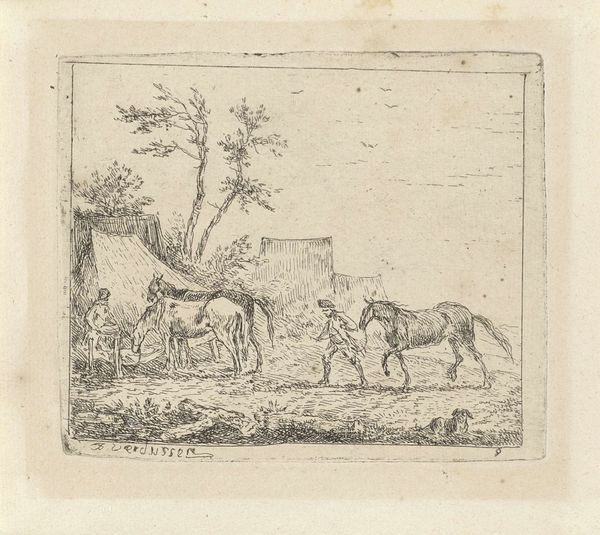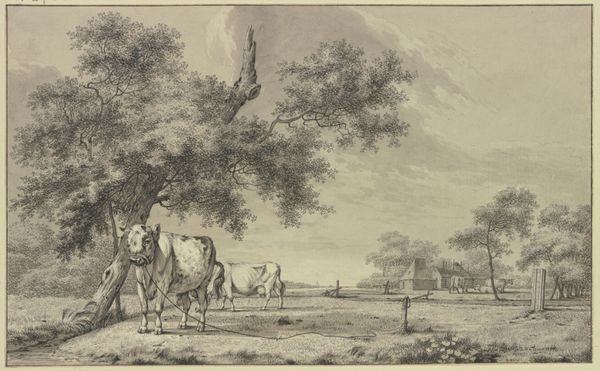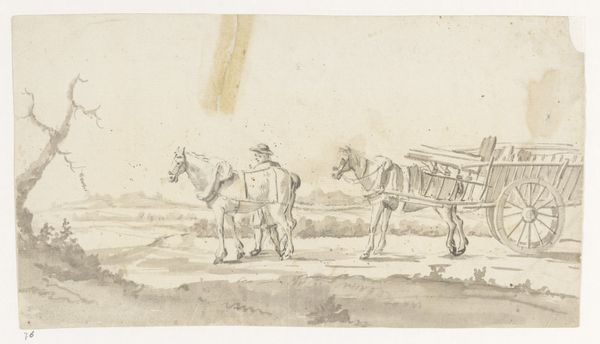
print, etching
#
baroque
# print
#
etching
#
landscape
#
figuration
#
line
#
genre-painting
Dimensions: 110 mm (height) x 137 mm (width) (bladmaal)
Curator: Welcome, everyone. Before us is "Oksekærre med en europæisk rejsende," or "Ox-Cart with a European Traveler," a 1668 etching by Christian Rothgiesser, housed right here at the SMK. Editor: My immediate reaction is a sense of the exotic meeting the mundane. There’s a distinct atmosphere of journey, both physical and perhaps cultural, in this print. Curator: Absolutely. What's fascinating here is the etching technique itself. Notice the fine, intricate lines that define everything from the leaves of the trees to the musculature of the oxen. It demonstrates skilled labor; consider the number of individual strokes required to create this level of detail, replicated many times over in printmaking. And then we must consider who the target consumer would be and how many prints were made for them. Editor: Those symbolic elements are precisely what grabs me. Look at the figure reclining in the cart; their posture, their clothes, suggest leisure and privilege. Juxtapose that with the laboring oxen and the surrounding landscape; we have visual cues suggestive of wealth inequality within the genre scene. Also notice the single figure of what might be an antelope that has been carefully and almost scientifically portrayed. It speaks to larger themes of the unknown meeting with enlightenment interests. Curator: Good point! And this highlights an interesting contradiction. Etchings, by their nature, democratized images. They were reproducible, meant for wider distribution than paintings. But the scenes they depict, often landscapes dotted with symbols of social strata, can subtly underscore power dynamics in agricultural societies, which surely connects to who was purchasing these types of artwork. Editor: It becomes a question of intended audience, doesn’t it? Were these prints aimed at those same privileged travelers, perhaps as souvenirs of their expeditions? Or was there another audience seeking this aesthetic view of travel as a sign of progress, something being slowly introduced at this time through visual motifs? The artist uses conventional figuration, framing a common view into an image, an "icon," that has staying power over the years. Curator: Thinking about production and the original historical moment, how was the image being interpreted through the cultural lenses that surrounded Rothgiesser himself? To whom was this new type of "landscape" being advertised? The artist himself, who did portraits and printmaking, may also be key. Editor: Seeing how our reflections interplay opens new dimensions. I had originally thought about symbolism and representation, while the process itself creates avenues for historical investigation through Rothgiesser’s style of production, distribution, and potential influence on later imagery and historical practices. Curator: Precisely! Understanding both the nuts and bolts of the making and the broader context of its creation allows for richer dialogue that gives art relevance through time.
Comments
No comments
Be the first to comment and join the conversation on the ultimate creative platform.
